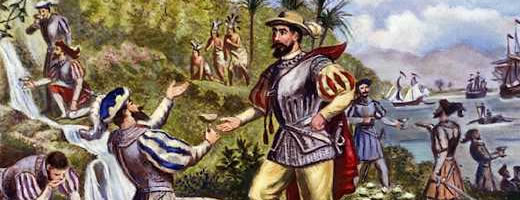
Although hundreds of acres had been developed by the end of World War I, most people who lived on the Beach still lived in “town,” the area between Biscayne Street, which traversed the southern tip of the peninsula, and Fifth Street.
The owners of most of this property, J. E. and J. N. Lummus, had hired a local character named Doc Dammers to auction off their land from the back of a wagon, and they finally began to have some success when they threw free crockery and pocket watches into the deal.
The Lummuses had come to Miami from a small Georgia town – “Scratch every third Miamian and you’ll find a Georgian,” old-timers say – and they couldn’t give a hoot about Fisher’s plans for a fancy winter resort.
The Lummuses advertised South Beach as a great place for a Miami family to build an inexpensive summertime home, and they welcomed anyone who was white, law-abiding, and could afford the property payments.
Soon a few modest bungalows dotted the empty streets.

With their sloping roof, heavy masonry walls, and broad verandas, the bungalow style, an Indian building form interpreted by the English, was particularly appropriate for the scorching South Florida summers.
J. N. Lummus’s rather substantial bungalow home, “Salubrity,” was something of a landmark.
The Beach got its first hotel in 1912, a simple, wooden two-story building at Ocean Drive and First Street, called Brown’s. There were bedrooms on the second floor and kitchens on the first, available in combination or singly.
Malvina Weiss Liebman Gutschmidt’s family stayed there for a while after they moved to Miami Beach from New York in 1920 for relief of her mother’s asthma.
“The Beach was like a South Sea Island then,” she said.
“We ate all our meals right on the beach, practically lived on the beach. We’d pile up driftwood and ferns and burn them at the full moon. We swam in the phosphorescence and fished all day – my brothers wove their own cast nets.
Once we knocked the bottom out of butter tub and had glass put in at a car repair place.

We’d dive off our little row-boat and put the bucket in the water and it would magnify everything so we could spear the fish more easily. My brother could see the ripples the fish made from the shore-sometimes he could even tell from the ripples what kind of fish they were.”
Hardie’s, Smith’s, and Cook’s casinos thrived on the pennies they collected on admissions and bathing suit rentals from Miami day-trippers. Sheriff and casino owner Dan Hardie thought bringing the circus to town would attract even more customers, and asked Carl Fisher to contribute $500 to a circus fund.
Fisher promptly offered him $5oo to keep it away.
Sophistication was arriving in the form of the Roman Pools, Fisher’s new casino built at the Twenty-third Street site of the Pancoast family’s homely Miami Beach Pools and Casino, a simple shingled building with a driftwood interior.
In its place went a block-long, onion-domed pavilion sprouting shiny brass flagpoles and fluttering pennants. Planted on the beach behind it was a picturesque windmill that pumped saltwater into two long swimming pools.
Stores and tearooms occupied the ground floor of the casino building, ballroom-dancing instruction was given in the second-floor meeting hall, and diving and swimming exhibitions were held at the pools.

The proper hour for ocean bathing, according to the standards set by Palm Beach society, was 11:30 in the morning.
Although styles would he revolutionized within a few years, women around 1920 still wore thick two-piece suits, long black stockings, and bathing shoes, with scarves or mobcaps covering their long hair, and no man would have dared expose his naked chest.
Afternoons at 4 p.m., a bugle call brought casino-goers to the sands for a half-hour physical culture class led by Professor McCarthy, a local eccentric and fitness buff whose regimen included the queer practice of marching up and down Ocean Drive rhythmically swinging his arms (today he would have plenty of racewalking company).
Besides running a gymnasium at Smith’s casino in South Beach, McCarthy peddled a special suntan lotion – his secret recipe turned out to be mineral oil and iodine – that he concocted in his bathtub, leaving behind a permanent ring for his angry landlord.
InsideMiamiBeach.com, like no other.




